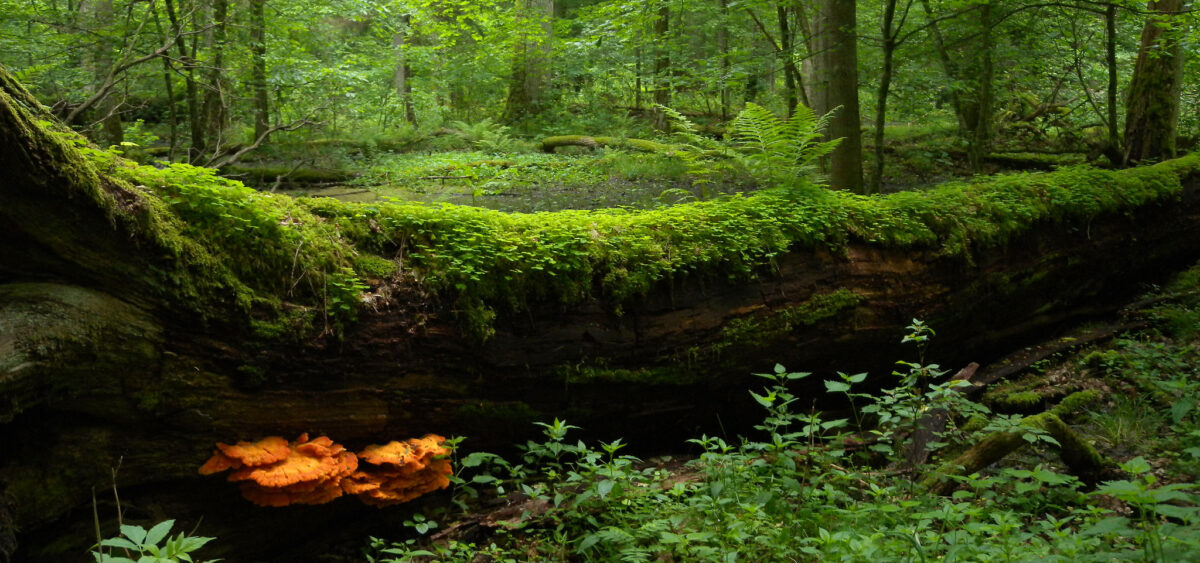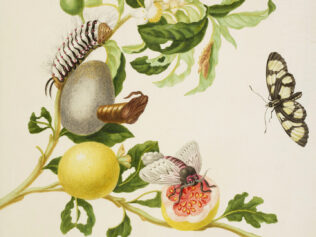
Old forests don’t need any fences, coverings for the trees, or birdhouses. They worked out a better survival strategy millions of years ago. If you know where to look, you can discover many of their secrets.
“Have you seen a natural forest?” I asked the couple I was meeting with one morning in the Białowieża Forest in eastern Poland. On their faces I saw consternation. They exchanged a furtive glance, as if they didn’t understand the question, or thought I was nuts. That was no surprise; their professional outfits and decent binoculars showed that they were familiar with being out in nature.
“Well, of course, several times,” the man said.
“We’ve been living by a forest for several years, in central Poland,” the woman added. “It’s natural, it’s been growing for decades since it was planted.”
“Great,” I replied. And off we went.
We walked down a trail through a bright, mixed deciduous forest. Around us grew old lindens, oaks and the occasional spruce. It was the second half of April, my favorite time in the woods. The vegetation was just getting started; first, it had burst out down below and under our feet were growing vast fields of wood anemones, creating a green carpet with a dense covering of white splotches. Over our heads, the crowns of the trees were preparing to open their parasols of leaves. The buds were slowly swelling, but betrayed no outward sign that their brown husks would soon burst as living greenery emerged. Up there, it was the calm before the storm. You could smell the spring, but the cold—particularly in the morning and before dawn—reddened your cheeks, reminding you that winter could return at any moment. Fresh. Wet. Soothing. It was the smell of a coming unstoppable change.
In an early spring forest, the visibility isn’t limited by leaves, so you can see a lot: not just large mammals (bison, moose, deer, wolves), but also small birds high up in the crowns of the trees. And there’s another important argument for choosing this time of year to observe nature: no mosquitos. Once spring has fully arrived in the forest, they can be unbearable.
A few years ago I took part in a study seeking to find out the degree to which the conditions in a particular place in the forest affect bird counts and species diversity. We compared two kinds of places: those with lots of dead trees, and those where there weren’t so many. The method consisted of counting all the birds we could see or hear. Observation was conducted from a single spot, and required you to spend fifteen minutes there: five minutes counting, then a five minute break, then five more minutes of counting. While in mid-April this was sheer delight, in the second half of May, when I repeated the measurements, it became a challenge. After the first day I thought I’d go insane from the buzzing all around my head. Waving my hands didn’t help much, and anyway, I had to use the clipboard and pen to write down my observations. That’s when the mosquitos would attack. Over the following days, a good solution proved to be a long-sleeved shirt and a cap with a mosquito net. What a relief. Despite these inconveniences, I wouldn’t have moved the experiment to any other place.
I love to be in the forest in the fall, too. It’s quiet, calm. The morning cold can be penetrating, but during the day the temperature gets more pleasant, especially when you recall the memories of the increasingly extreme and frequent heat waves of the past summer. The deer flies—tiny bugs with flat bodies—are the only things that can really annoy you. They land on a host, then discard their wings to be able to move more easily. They can get under your clothes, nest in your hair. When they find the right place, they dig into your skin. Sometimes you find them only many hours later, after you get home from the forest. Fortunately for us, they’re only irritating, not dangerous.
Bird Housing
We wandered down the forest paths, birds chirping all around us. We heard a song thrush repeating its verses, the fluting of a blackbird and a hooting wood pigeon, whose voice sounded like an asthma sufferer’s panicked attempts to grab enough air. I am truly incapable of understanding what the females of the species find attractive in this song. In the distance, from the top of a tall spruce, a nutcracker made itself known with cawing. We entered the territory of a great tit, which alarmed its avian neighbors with its chattering voice. I knew it had its nest somewhere nearby. I looked around, and soon noticed an elongated, spindle-shaped hole in a tree. We went closer. The bark, lighter around the edges—because of the little feet that had grabbed onto it before entering—was incontrovertible evidence of occupancy. In a natural forest, that’s what typical tree holes belonging to birds other than woodpeckers look like. Species that don’t make their own holes, like tits or flycatchers, are secondary cavity nesters. What they like best are holes caused by decay, not those carved out by woodpeckers. Here, I should add a minor correction: some of them—the willow tit and crested tit—might drill holes in very rotten wood.
The information about the woodpeckers and their role as property developers surprised my companions.
“So the woodpeckers don’t make homes for other birds? But in our forest, in one of the holes where a woodpecker nested, a nuthatch moved in,” the woman said.
“Not in a natural forest,” I replied, undeterred by her disbelief. “I’m sure you’ve seen more than one birdhouse carved out by a woodpecker. They don’t do that to fix a human’s poor workmanship. They just want to get inside, and . . .”—I paused in suspense for a moment—“eat eggs or chicks. No sane bird would nest in a woodpecker’s former hole if it doesn’t have to. And they don’t have to because a natural forest is full of trees with spaces opened up by wood-digesting fungi. In the forest there’s an average of four such spots for every pair of birds.”
Hornbeams and aspens are the best. They grow fast and they die fast too—by tree standards, of course. Before that happens, fungi and insects hollow out spaces in these trees where hundreds of organisms live. In commercial forests, where the main goal is to produce high quality wood, weakened trees are quickly removed as a potential source of disease. Sometimes one will remain, either because the administrators miss it, or allow it. But generally in commercial forests there’s no way a natural shelter can be formed. So, small songbirds have to nest in holes drilled by woodpeckers, or in houses hung up by people as a substitute for real hollow trees. Don’t misunderstand me; houses are necessary in places where you can’t always allow dying trees to stick around—in cities, or in wood-producing forests. But they can’t replace real hollow trees with their stable climate (regardless of heat or cold outside), and their exceptional self-cleaning ability. Unlike houses, hollow trees don’t need to be cleaned before each nesting season. They’re already ready to welcome new tenants because all the work is done by microorganisms.
Aside from the normal drilled holes, in a small hornbeam I notice a rotten depression between its low spreading branches. This is also a hole: a dendrotelma. In commercial forests, the chances of finding one are low because the trees that have them are chopped down first. It’s not worth keeping them around, because the water that collects in them causes a tree’s tissues to rot. But these reservoirs are extremely important habitats for rare invertebrates, and on hot days, they’re a water source for birds, rodents, and bats. Only in a forest untouched by humans, or one where human intervention is severely restricted, do these tree hollows have the chance to survive and soothe the thirst of the local residents.
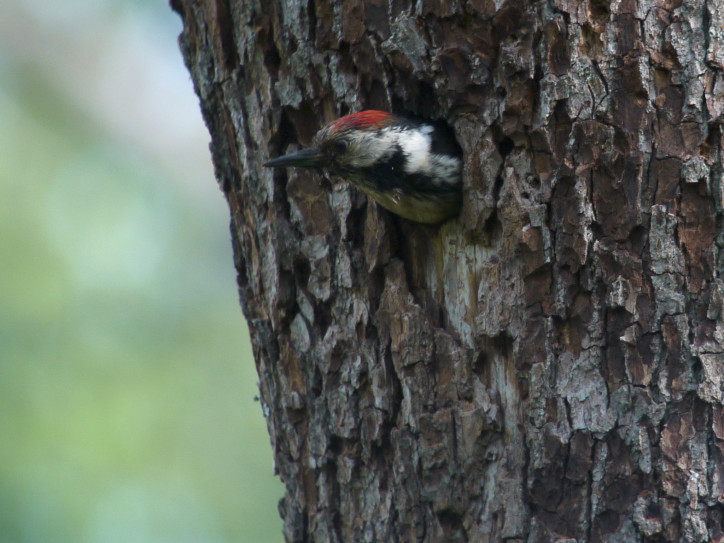
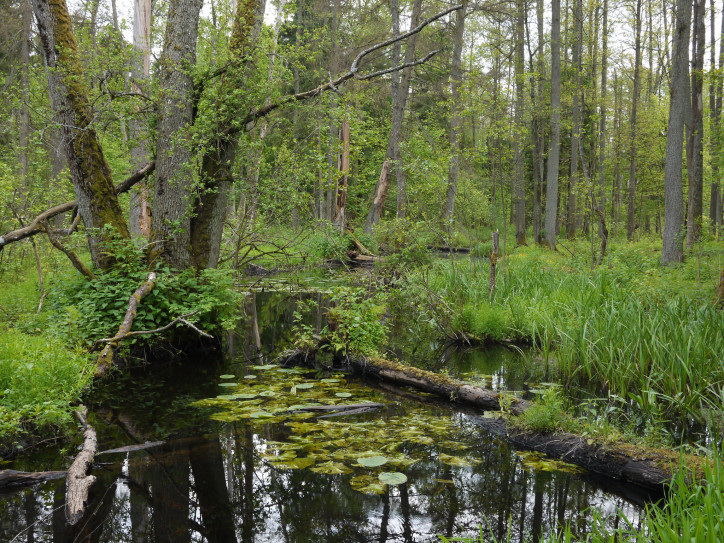
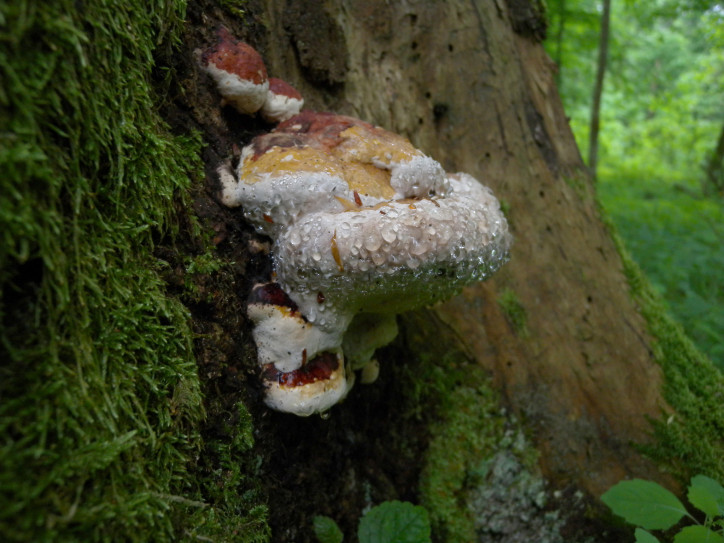
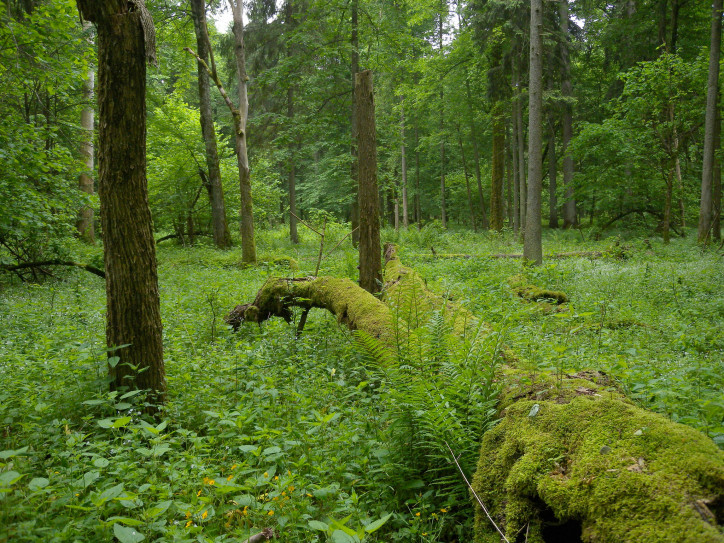
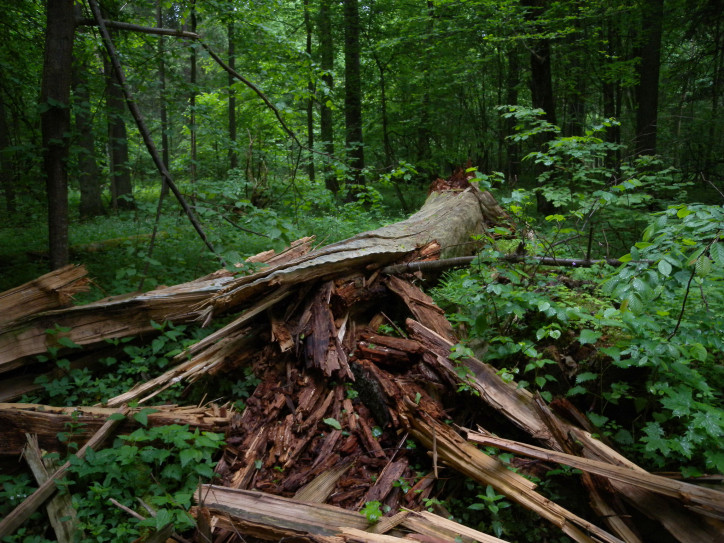
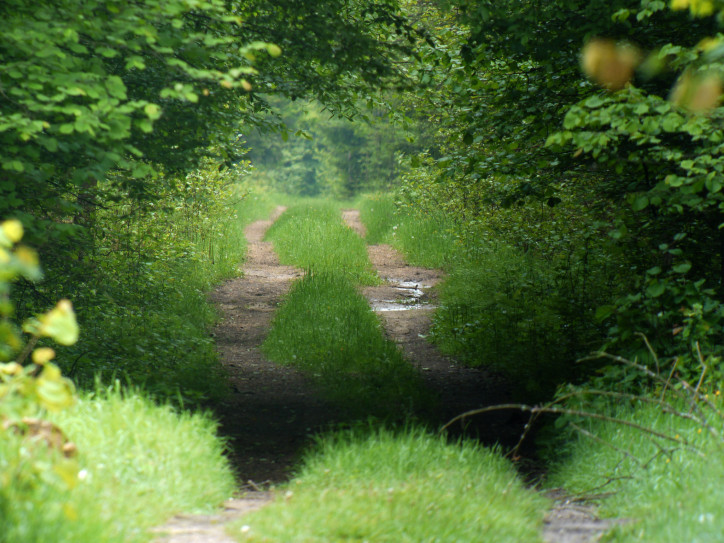
Room for One More
We passed a fenced-off section that’s no longer a natural forest. My companions assumed this is the effect of the recent wounds inflicted by the logging that covered more than a quarter of the forest’s area. An analysis of 2015-2018 satellite photos of the Białowieża Forest, published in 2018 in the prestigious journal Biological Conservation, showed that the cutting directly and indirectly affected 4,073 hectares of forest. It caused a 26 percent increase in habitat fragmentation and the destruction of 229 hectares of old-growth forest. The logging had numerous negative effects, changing the lives of many organisms – not only destroying their habitats, but also affecting them in other ways that are often difficult to grasp. I used to have a spot where I would always meet a Eurasian pygmy owl, Poland’s smallest owl species. Many of these birds have disappeared. Forever? Maybe in a few hundred years, when this part of the forest once again begins to be governed by its own, wild laws, the pygmy owls will return.
A natural forest needs no fences. It protects itself. To understand this better, you have to look at a place where old, fallen trees lie—ideally several of them, creating a tangled mass of branches. Stripped of their bark, the bright trunks stick up like the ribs of some gigantic prehistoric creature. Some of them, when they fall, are driven deep into the ground, breaking under the tremendous force. Sometimes this is how the trees die, though more often the fall happens well after their death, after years or decades when they stood proudly like statues erected in honor of the forest’s power.
It’s not the fallen giants themselves that capture my companions’ attention, but the smaller and larger trees growing up between their branches. In a few dozen meters there are no similar specimens. Why? They must have been eaten by wild ungulates. Falling old trees don’t just give space and light to the next generation; they also protect the young trees from being eaten by deer and elk. That’s who humans protect newly planted commercial forests against, with miles and miles of metal mesh. If it weren’t for the fencing, not many saplings would have the chance to reach adulthood.
Ancient Wisdom
Natural forests found a solution to this problem millions of years ago. The dying giants protect their descendants. What’s more, they provide the youth with nutrients. Years pass before they finally decompose. By then the saplings, wrapped in a tangle of protruding branches and huge trunks, will be able to protect themselves from the teeth of the ungulates. But the behemoths themselves aren’t enough. They wouldn’t be able to protect their offspring without the active assistance of other residents of the forest. They need support from wolves and lynxes. If it weren’t for these large predators, sooner or later the deer or elks’ muzzles would reach the small trees, even among the most densely tangled branches. It would require some acrobatics and a bit of time, but hunger and determination would eventually do their work. The presence of wolves and lynxes means they can’t afford it. Sometimes deer will nibble a seedling or a regrowing tree at the edge of a group of downed trees, but entering the tangle of trunks is out of the question. That’s playing with fire, a death wish. Any wolf passing by would have a simple task to corner their prey. And a lynx crouching on a fallen tree trunk would have ideal conditions for a death-dealing leap. Saplings in a natural forest don’t need protection in the form of wire fencing or plastic shielding on the trunk, or spirals on the branches, or being smeared with various bad-tasting materials, to keep from being eaten. A natural forest protects itself.
We move further. I go up to a large aspen, broken off at the height of my waist. Next to it lies the bitten-off leg of a dear. More proof of the presence of wolves. My companions are clearly moved by this discovery. I calm them down, saying there’s nothing to worry about. I’ve been walking in the forest at all times of the day and night, for many years. I’ve met wolves many times, and they’ve never had bad intentions. In fact, we know from research that they fear us more than we fear them. For wolves, people are superpredators: you have to get out of their way to stay out of danger. You never know what kind of intentions a human you meet will have. Better to avoid them all. This must be why the individuals I’ve met usually disappear into the forest when they notice me, so I’ve never gotten a good look at them. Only once did they let me observe them, for almost half an hour. An unforgettable moment.
I lift up a piece of the aspen’s bark. We begin a brief lesson on forest insects. I show them two yellow-orange larvae. They’re surprisingly flat, as if somebody squashed them. Next to them I notice an adult. The crimson red beetle has a body just as flat as its younger form. Cucujus cinnaberinus is a rare insect, said to be an indicator species for natural forests. A little further on there’s a rotting linden tree. We go up to it. Sawdust spills out from a hole at eye level, with barrel-shaped black particles among it. I pick one up delicately and lay it on my open palm. I explain that this is the dung of the hermit beetle (Osmoderma eremita)—another relic associated with natural forests.
Natural Forest
I dust off my hands and we move on. After about two hundred meters we stop by a Norway maple. At a height of about eight meters, a lichen hangs from a large patch of moss covering the trunk. I noticed it from far away, but to inspect it, we need binoculars. It turns out that what we’ve found is a tree lungwort (Lobaria pulmonaria), a very rare forest indicator species, which shows that human activity in the area has been minimal.
On the ground next to the maple’s trunk we find a scattering of feathers. It’s a pluck—the remains of a victim of a bird of prey, most likely a hawk of some kind. After looking at the shimmering dark blue feathers, I know they belonged to a hawfinch. They’re easy to spot in winter near feeders. “Poor thing,” the woman walking with me says. I reply that a whole range of predators live in the forest. From mice and dormice, through squirrels, martens, hawks, buzzards, lesser spotted eagles, foxes and raccoon dogs, to wild boars and wolves. That’s why natural forests are governed by different rules than those managed by humans, where there are significantly fewer predators. This is the reason why it’s not uncommon for just one nesting pair out of ten to manage to raise a brood. Despite the threats, the population doesn’t decline, and for some species, including the hawfinch we encountered, it even grows.
That’s the end of our adventure, which has lasted almost eight hours. Even though we’re all tired, we’re also all smiles. When we get back to our cars, I ask again: “Have you seen a natural forest?”
Now they understand what I meant at the beginning of our meeting. For the first time in their lives, they’ve experienced a forest that’s fully governed by its own rules, worked out over millions of years, without human intervention. A forest not planted by humans. A forest that has never needed us to survive, and still doesn’t—where today the only thing we bring is suffering.
I’m lucky enough to be able to look at Białowieża Forest, this outstanding natural forest, as a forester by training, as a scientist and as a person who works in active protection of nature, as well as someone who truly loves the place. I talk about the forest and its denizens from each of these perspectives. I don’t impose my way of thinking. I know that those who have experienced a natural forest with all their senses will eventually arrive on their own at the conclusion that this is the most beautiful and the last true wild forest in Poland. And they’ll understand why we need to protect it.


